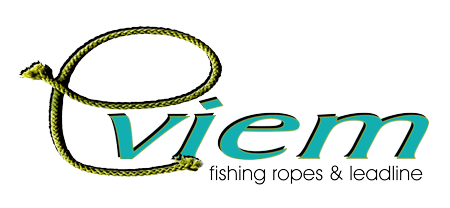The 5 Stages Of Team Development Defined
Content
The storming stage of team development is a time for team members’ ideas are considered and in competition. Individuals will try new ideas and push for power and position in the team. There can often be little team spirit and lots of personal four stages of team development attacks. Those team members who are conflict avoidance will often participate little in this phase due to its inherent nature. Conversely, those that are not conflict avoiding will often participate more during this stage than others.

Each of these five stages clearly represents a step that teams go through, from start to finish, to work on a project as they complete all of the necessary steps and tasks for it to be a success. Slack IntegrationCollaborate on meeting agendas, share notes, and exchange feedback – without leaving Slack. Meeting MinutesCreate official records of the discussions and action items generated during meetings and save time with Fellow’s meeting minutes templates. Team MeetingsCollaborate on meeting agendas, take notes in real-time, and end every team meeting with an action plan.
Why Are The 5 Stages Of Group Development Important?
Performance Management is a process and a process which if implemented … By having an open discussion right at the start of the team’s task then people get the chance to air views, concerns and queries. There are high chances that disagreements may arise between team members in this phase.We already saw that, in Forming stage team members tend to be independent and less open. When there is a group that is involved in discussions there will always be different ideas and perspectives.
- It’s important to step back a little during this stage and allow the team to succeed without you where possible.
- After extensive research (of my own personal, and others’ motivations) I have discovered that in order to produce ‘self motivation’ in others, a manager should concentrate on four key factors.
- Your role here is to act as the team’s champion, securing resources and minimizing roadblocks in the organization.
- Lessen the direction and spend time with individuals starting to coach them in relation to their roles within the team and the tasks that they have to perform.
Forming is the first stage and occurs as your players begin each new season. Your returning players are a year older and your new freshmen and/or transfers are trying to figure out what is going on. This initial stage involves excitement as well as uncertainty because some players are not even sure if they are going to make the final cuts. Others know they will make the team but are unsure about the role they might play. Experienced players will be trying to get a feel for the newcomers in an attempt to see if they can help the team or if their position might be threatened. On the surface, most people will be cordial and friendly as they meet and interact with the new team members, but internally there are often a lot of unanswered questions that can cause stress.
Do New Managers Get A Raw Deal?
The manager should attempt to do the following in order to give the team the best possible start. Next up is the performing stage, which tends to be where there is the most cohesive work environment, people are happy and excited, and team performance is at an all-time high. There’s a clear and stable structure in place throughout the group and everyone is fully committed to achieving the goals put in place.
The rules and regulations are being adhered to and people are working together positively. Relationships become stronger as people are more aware of each other. Strengths and weaknesses are realised and utilised accordingly. The role of the coaching manager in this stage is to ensure that this calm continues and that any behaviours that arise that may threaten the calm are channelled in the right direction. Also the manager has an important role in conveying information particularly in relation to the successes that are starting to occur within the team.
However, there are some strategies you can do to help your team advance through the five stages with minimal conflict. ProductFeatures OverviewSee how high-performing teams are using Fellow to level-up their meeting and productivity habits. Additionally, some teams make their way through the Storming stage but the unproductive norms that are established become their eventual downfall. The norms that are established may be totally counterproductive to your team’s success. For example, “Do just enough to get by,” “Every person for themselves,” “Coach plays favorites,” are all norms and attitudes that have prevented teams from reaching their potential. Teams with poor standards continually keep themselves from progressing.
Seek first to understand and encourage everyone on the team to take the same approach. Act as a sounding board and allow any hidden agendas to surface. Provide information and suggest alternative solutions to roadblocks. It’s important to demonstrate the skills you want the team to develop. In many ways there are no secrets to implementing effective performance management.
Getting Useful Feedback On Your Portfolio Website
Tuckman’s model explains that as the team develops maturity and ability, relationships establish, and the leader changes leadership style. Beginning with a directing style, moving through coaching, then participating, finishing delegating and almost detached. At this point, the team may produce a successor leader and the previous leader can move on to develop a new team. This stage typically occurs when the project is finished and the team members move into different directions.

You may feel like you can skip the first or the last, but each stage has a purpose. Unity is upon everyone and a consensus develops around who the leaders are, what everyone’s role is, and what comes next. There’s also a sense of bonding between the team and is more familiar with each other’s personalities and sense of humor. There should also be a sense of comfort in the norming stage when giving constructive feedback through online forms, or asking for help as you work through various tasks. As you realize, you are an important catalyst in monitoring and mixing your team’s chemistry. Keep the stages of team development in mind as you guide your team from Forming to Performing.
Models: Tuckmans Stages Of Team Development
If there are any hidden agendas, they will typically be exposed as team members solidify team norms. Decisions are made through consensus building and negotiation. One of the greatest challenges a manager has is in moving his or her team though the various https://globalcloudteam.com/s. If a manager has no, or little experience of teams and team dynamics then taking over a team and then leading that team can be a very stressful experience. Every manager should know what the various growth stages are of a developing team and they should know how best to move the team through these stages with the minimum of fuss and stress. As a leader, you can delegate the most of your work and focus on the development of your own skills.
In case of a conflict, the members can quickly resolve it by using the strategies adopted at the storming stage. As a team leader, at this stage you should motivate the members and encourage them to move to the performing stage. For your team to be as successful and as high-performing as possible, it’s important that all five stages are utilized to their fullest potential.
That way, it’s built-in to the time and it’ll never go forgotten. Team development will have your team be as successful and as high performing as possible. Learn how these 5 stages will create a high-functioning unit. SolutionsMeeting agenda softwareCollaborate on meeting agendas, assign action items, and ask for meeting feedback.

This is when a lot of talking goes on “behind the manager’s back” This is very unhealthy for a team. Engineering management, leadership, software architecture, high-performing teams, professional growth. At the end of the day, when your team implements the five stages of team development, it sets up everyone in all roles for success. And, when all is said and done, going through all five stages of team development sets the team up for success.
Run Delightful Meetings With Fellow
The organisational environment the new team exists in is also unfamiliar to its members. The managers must introduce the team to its stakeholders and explain its dependencies and its place in the organisation. Remember that no matter what, problems and conflict can still emerge, but they’re handled and dealt with in a constructive and honest manner. And, because there’s a bond and a relationship already built amongst the team members, it’s easier and faster to get to a resolution if a conflict were to occur.
If you reach the performing stage, it means that your effort at the first three stages has finally paid off. Some team leaders become incapable of bringing the team to the performing stage, so they remain at the norming stage. Teams cannot exist indefinitely if there is overarching goal to achieve. Tuckman added the adjourning stage as a final stage to his four stage process.
One to ones help but inevitably there will start to be undercurrents of disagreement as to what has exactly been agreed. Storming usually arises as a result of goals, roles and rules all becoming confused and unclear. This results in confusion when different behaviours are evident and conflicts can arise with the potential for factions being created within the team. Stage two of five is considered the most critical but also the most difficult to go through. It can be riddled with conflict as the individual personalities and work styles clash within the team.
It’s also common for team performance to dip a bit in the storming stage as members can sometimes disagree on goals, strategy, responsibilities, and roles. Also, keep an eye out for subgroups or cliques that can begin to form during this stage. His theory, which is referred to as Tuckman’s Stages, is centered around his research on the dynamics of teams and team building.
Over the years, I have worked with many teams and have found theses stages to be very predictable. Many get stuck at Norming and although everything appears normal, there is a lack of momentum and motivation towards achieving the all important team goals. It is as though the team is comfortable in this stage and does not want to progress further for fear of returning to a storming stage, a stage that probably was very uncomfortable for most people. It is crucial for effective project management and eventual project success. So, in order to be effective leaders and managers, one should have a clear idea of what may be going on with his/her team at any point of time.
As you probably realize, team building is a complex, ever-changing process that must be continually monitored and adjusted. While chemistry class is not required for most coaches, it is typically one of the most important subjects to comprehend. One of the best ways to build team chemistry is to have a clear understanding of the typical stages of team development.
Understanding that each stage is normal and expected can relieve a lot of tension and free the team up to break through and move on. As a leader, it’s important to know where your team is and how you can help them move through to the next stage of development. Performing – when the team starts to produce through effective and efficient working practices. In this stage, Project Manager can give his most attention to developing individual team members. Norming stage is marked by traits such as reconciliation, reduced anxiety and emotions, development of trust, and collaboration among the team members.
